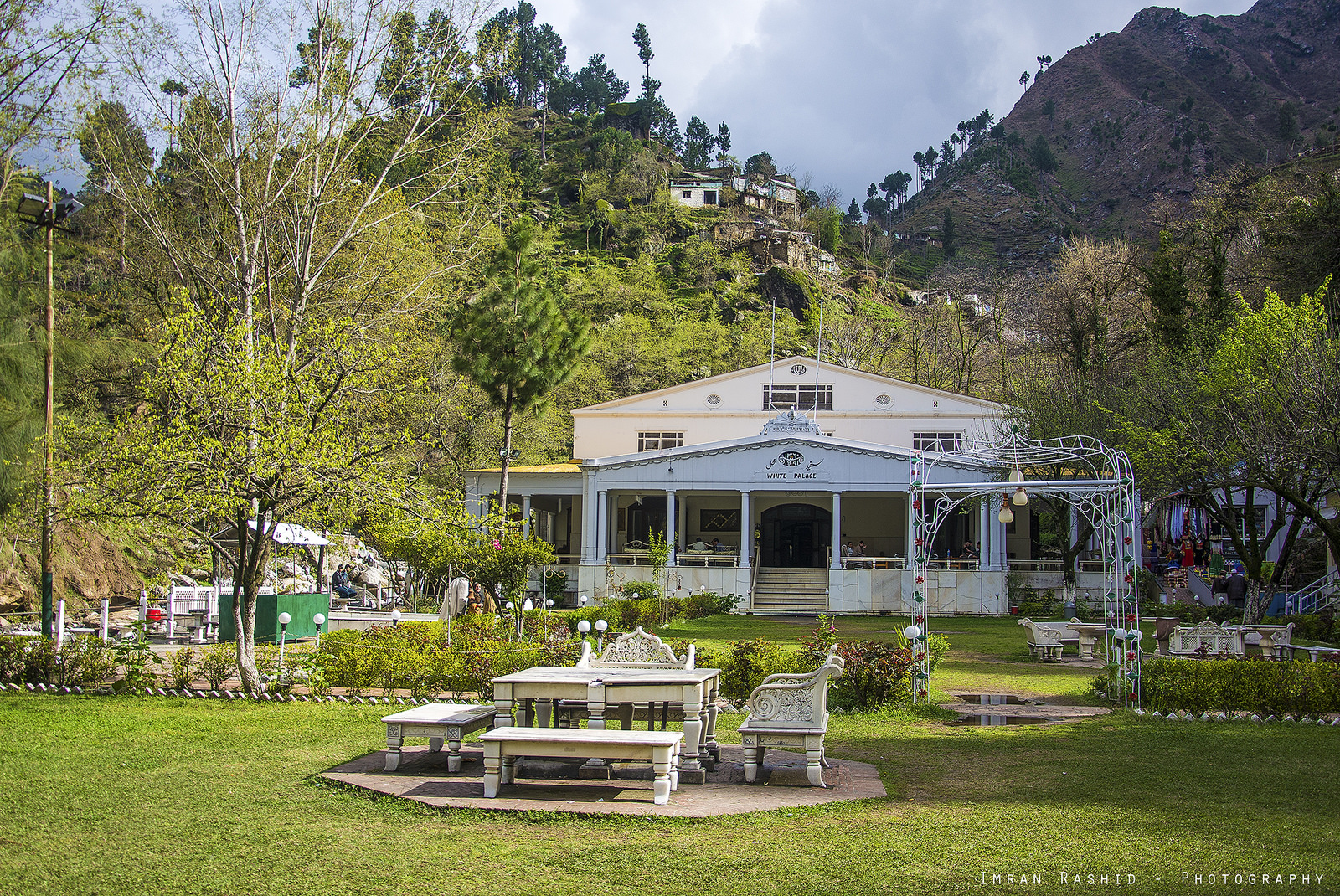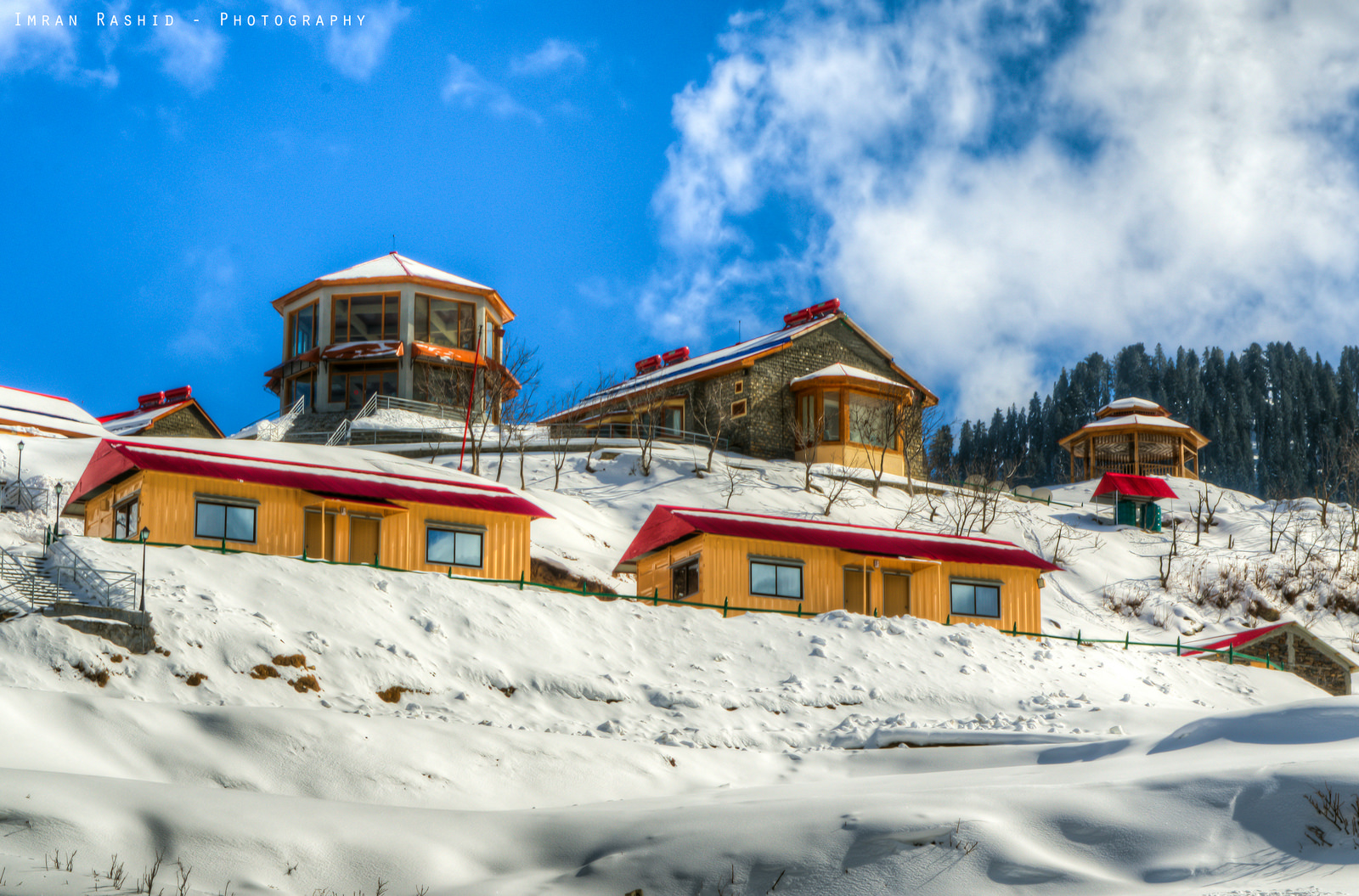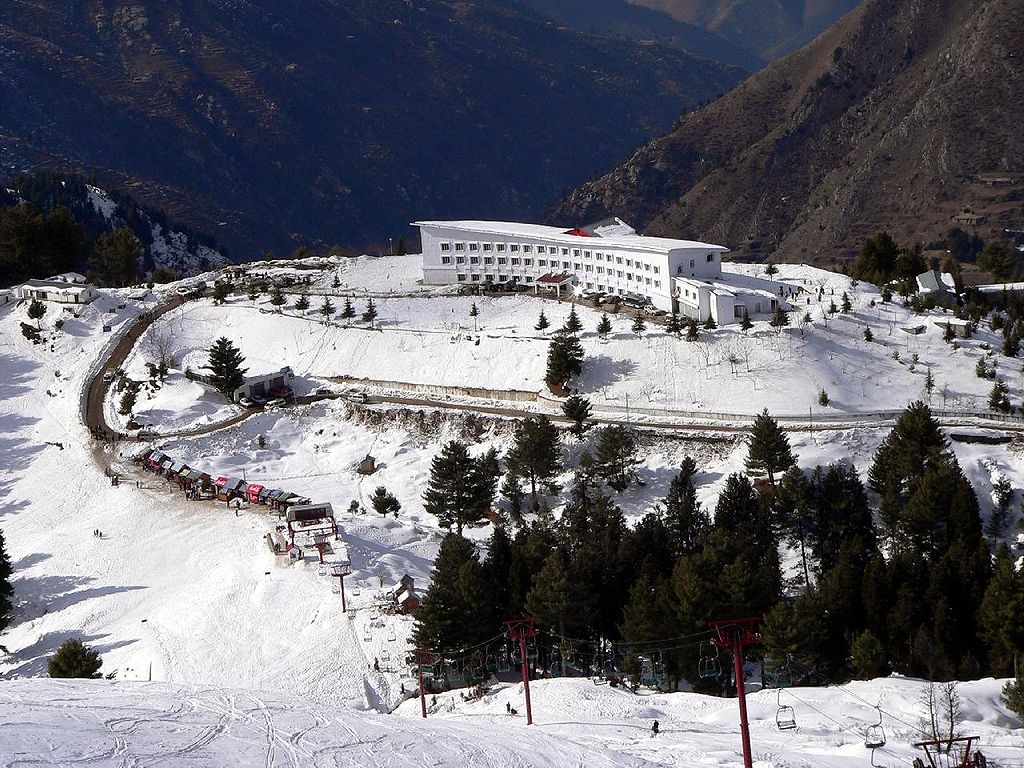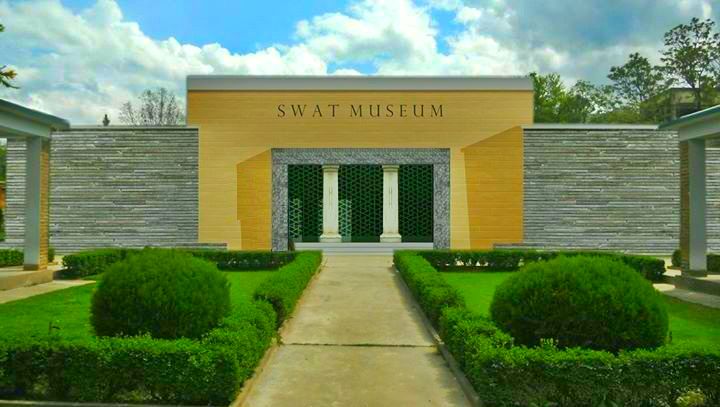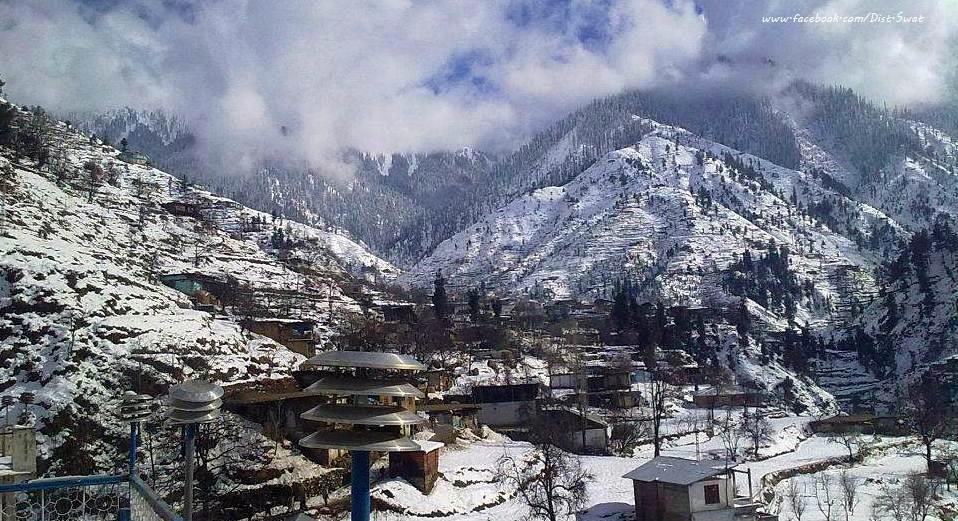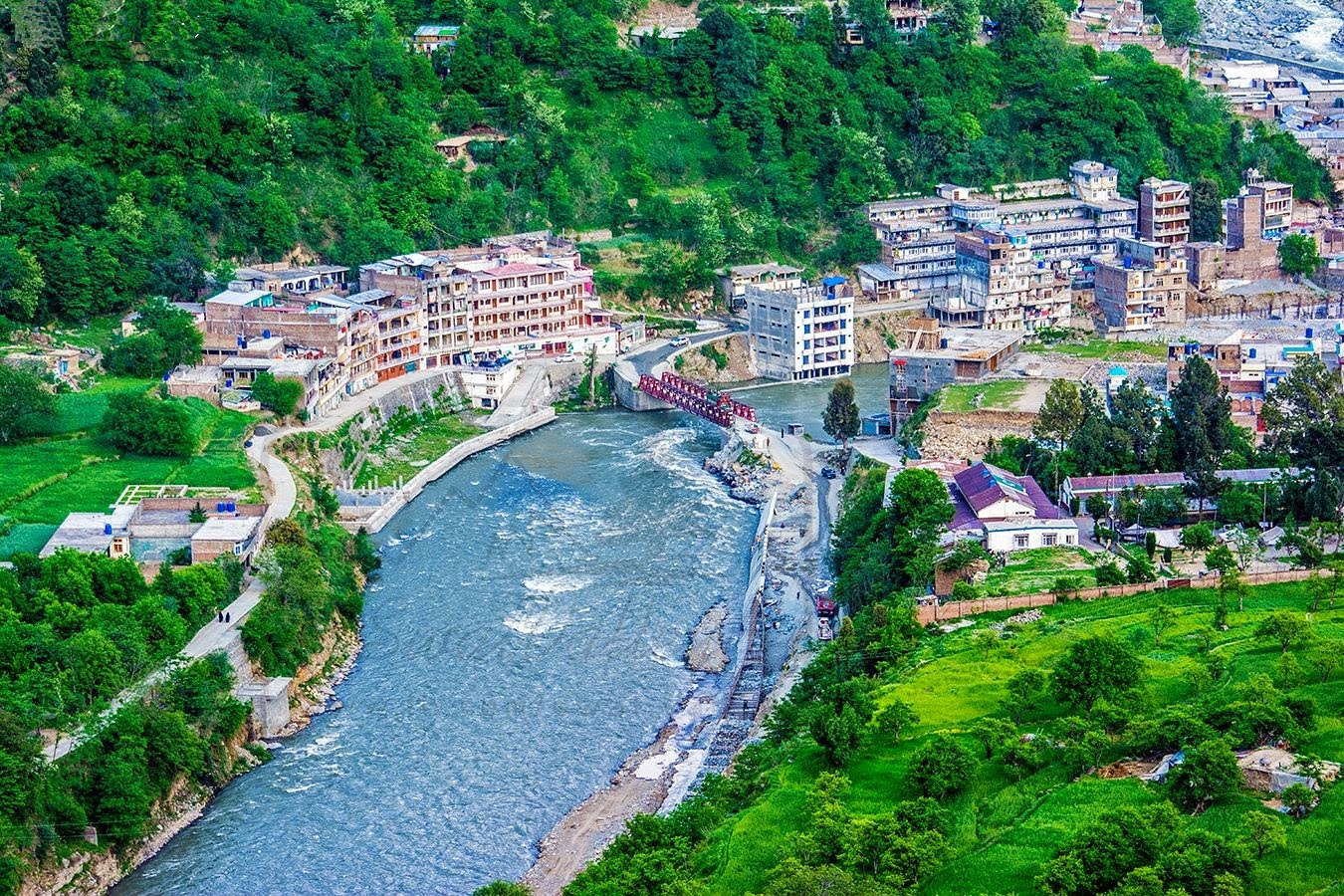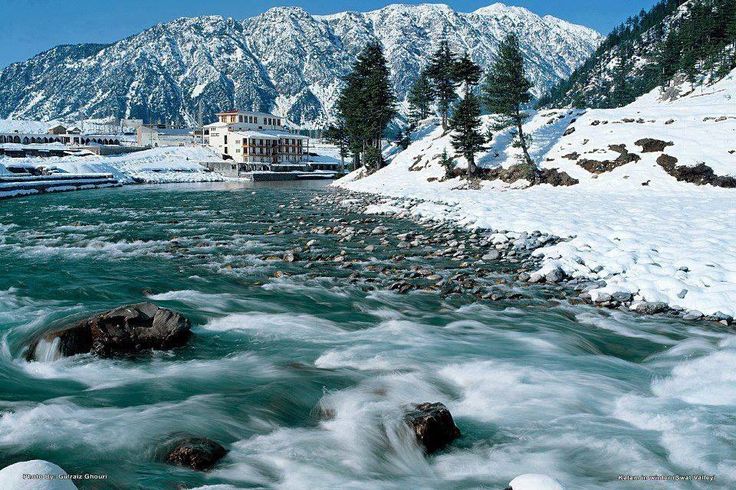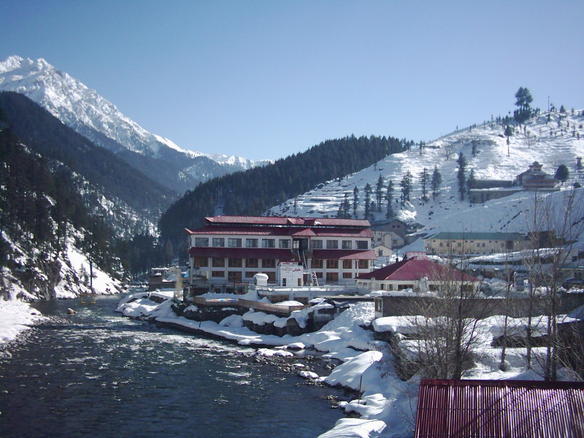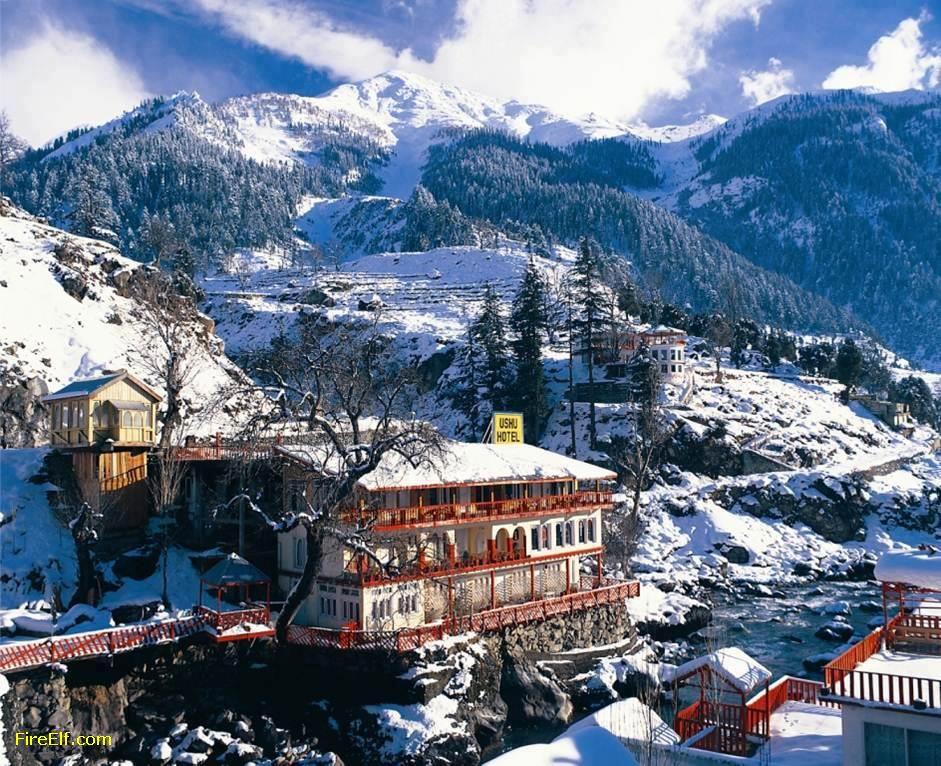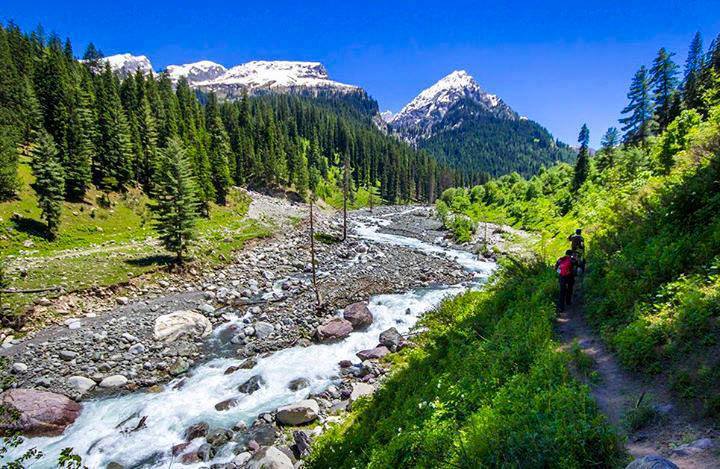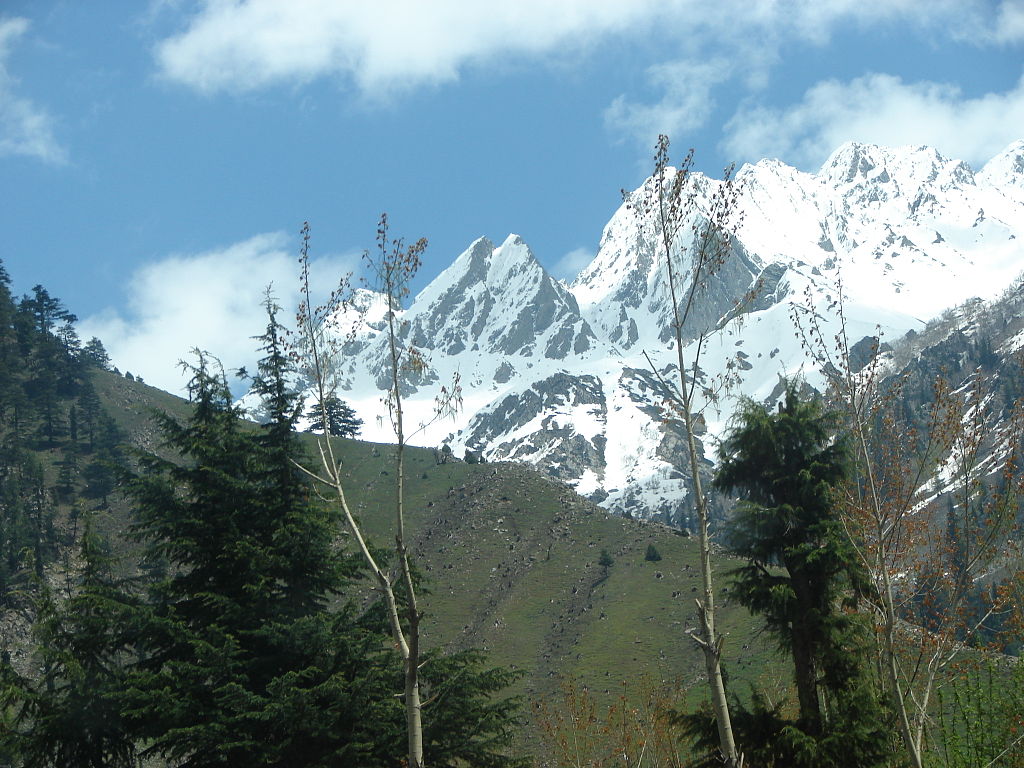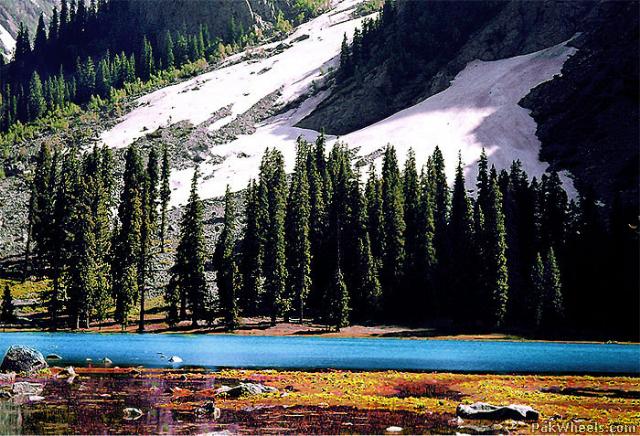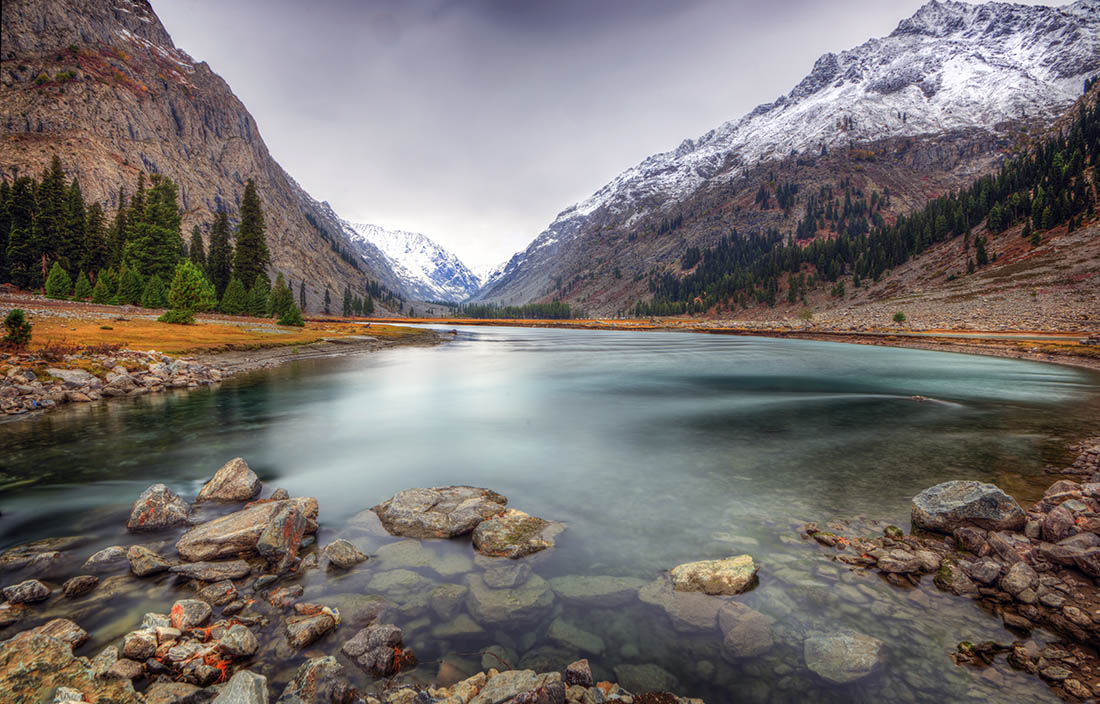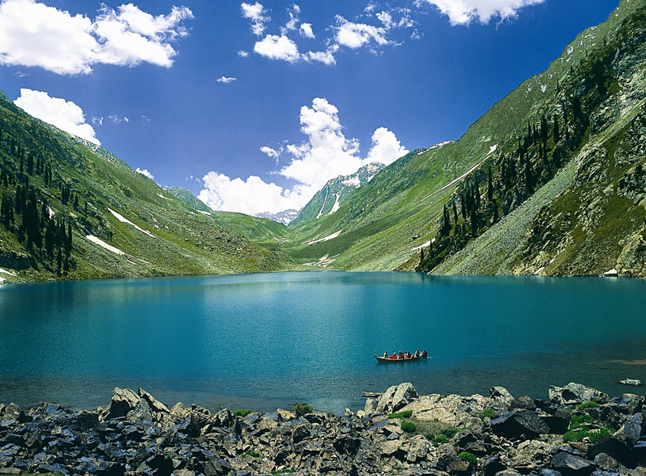Swat is a valley and an administrative district in the Khyber Pakhtunkhwa Province of Pakistan. It is the upper valley of the Swat River, which rises in the Hindu Kush range. The capital of Swat is Saidu Sharif, but the main town in the Swat valley is Mingora.
It was a princely state in Khyber Pakhtunkhwa until it was dissolved in 1969 along with many other princely states like Dir state and Chitral state. The valley is populated mostly by ethnic Pashtuns and Gujjar and Kohistani communities. The languages spoken in the valley are Pashto , Gojri, Torwali and Kohistani. Most non-Pashtoon people of the area are bilingual and fluent in Pashto along with their native languages. Throughout the district, there is a less tendency of ethnic discrimination and all of the inhabitants of Swat refer to themselves as Pashtoon irrespective of the communities they belong to.With high mountains, green meadows, and clear lakes, it is a place of great natural beauty and is popular with tourists. Queen Elizabeth II during her visit to the The Yusafzai State of Swat called it “the Switzerland of the east.Swat is surrounded by Chitral, Upper Dir and Lower Dir in the West, Gilgit-Baltistan in North And Kohistan, Buner and Shangla in the East and south East.
Tourist attractions:
Marghazar:
Marghazar 16 km away from Saidu Sharif is famous for its “Sufed Mahal” the white marble palace of the former Wali (Gujjar Ruler) of Swat.
Malam Jabba:
Malam Jabba (also Maalam Jabba, Urdu: مالم جبہ) is a Hill Station in the Karakoram mountain range nearly 40 km from Saidu Sharif in Swat Valley, Peshawar, Pakistan. It is 314 km from Islamabad and 51 km from Saidu Sharif Airport.Malam Jabba is home to the largest ski resort in Pakistan. The Malam Jabba Ski Resort, owned by the Pakistani Tourism Development Corporation, had a ski slope of about 800m with the highest point of the slope 2804 m (9200 ft) above sea level. Malam Jabba Ski Resort was the joint effort of the Pakistan government with its Austrian counterpart. The resort was equipped with modern facilities including roller/ice-skating rinks, chair lifts, skiing platforms, telephones and snow clearing equipment.
Swat Museum:
Swat Museum is on the east side of the street, halfway between Mingora and Saidu. Japanese aid has given a facelift to its seven galleries which now contain an excellent collection of Gandhara sculptures taken from some of the Buddhist sites in Swat, rearranged and labelled to illustrate the Buddha’s life story. Terracotta figurines and utensils, beads, precious stones, coins, weapons and various metal objects illustrate daily life in Gandhara. The ethnographic section displays the finest examples of local embroidery, carved wood and tribal jewellery. For the last three years the museum is occupied by Pakistan army and it is not known when they would be leaving it.
Miandam:
Miandam is a small summer resort ten kilometres (six miles) up a steep side valley and 56 kilometers (35 mi) from Saidu Sharif, making it an hour’s drive. The metaled road passes small villages stacked up the hillside, the roofs of one row of houses forming the street for the row of houses above. Tiny terraced fields march up the hillside right to the top. Miandam is a good place for walkers. Paths follow the stream, past houses with behives set into the walls and good-luck charms whitewashed around the doors. In the graveyards are carved wooden grave posts with floral designs, like those used by Buddhists 1,000 years ago.
Madyan:
By the time you reach this small town at 1320 m and about 60 km from Mingora, the mountains have closed in and the valley is almost snug. Here one senses why Swat is so popular among the tourists. There are a lot of embroidered shawls in the Bazars of Madyan.At 1,321 metres (4,335 feet) above sea level,but it is a larger town and has many hotels in all price ranges and some good tourist shopping. Antique and modern shawls, traditional embroidery, tribal jewellery, carved wood and antique or reproduced coins are sold along the main street. This is the last Swati village, offering interesting two-and three-day walks up to the mountain villages… ask in the bazaar in Muambar Khan’s shop for a guide. North of Madyan is Swat Kohistan where walking is not recommended without an armed guard. The central mosque at Madyan has carved wooden pillars with elegant scroll capitals, and its mud-plastered west wall is covered with relief designs in floral motifs. Both bespeak the Swati’s love of decoration
Behrain:
A quarter of an hour past Madyan, the road squeezes through Behrain. Tourists stop to shop or have a look around for beautiful carved wood chairs and tables and other handicrafts. Behrainis are a mix of Pashtuns and Kohistanis. Behrain is ten kilometres north of Madyan and only slightly higher, at about 1,400 metres (4,500 feet). It is another popular riverside tourist resort, with bazaars worth exploring for their handicrafts. Some of the houses have carved wooden doors, pillars and balconies. These show a remarkable variety of decorative motifs, including floral scrolls and bands of ornamental diaper patterns almost identical to those seen on Buddhist shrines and quite different from the usual Muslim designs
Kalam:
Kalam, 29 kilometres (18 miles) from Bahrain and about 2,000 meters (6,800 feet) above sea level, the valley opens out, providing rooms for a small but fertile plateau above the river. In Kalam the Ushu and Utrot rivers join to form the Swat river. Here, the metalled road ends and shingle road leads to the Ushu and Utrot valleys. From Matiltan one gets a breath-taking view of the snow-capped Mount Falaksir 5918 meters (19,415 ft.), and another un-named peak 6096 meters (20,000 ft.) high
Kalam, is the most beautiful part of the Swat valley. The galaxy of about 150 hotels, land of water falls, lakes, pastures, site of hiking and glaciers, having all the latest facilities of the modren age. Surrounded by lush green mountains, covered with forests and vegetation, a diverse and oldest cultural values to witness and above all the friendly and hospetile people. strawberries are found every where in the forests of Kalam. Don’t forget to have a gesture of it. See you there at the top of the mountains
Ushu Valley:
The valleys of Ushu, Utrot and Gabral beyond Kalam, constitute some of the most beautiful parts of Swat. There is good trout fishing around Utrot. Foreign tourists are advised to contact the local police authorities at Kalam before preceding to the valleys of Ushu, Utrot and Gabral.
Swat is ideal for camping, trekking and mountaineering. Permits are necessary, and can be obtained from the Tourism Division, Government of Pakistan, Markaz F-7, Islamabad.
The waters of the Swat River around Kalam and in the valleys of Ushu and Gabral abound in brown trout. Fishing licenses must be obtained from the office of the Assistant Commissioner, Fisheries at Madyan and Kalam.
Utror Valley: 16 km from Kalam Valley and 120 km from Saidu Sharif. Utror valley is situated between 35° 20′ to 35° 48′ N latitudes and 72° 12′ and 72° 32′ E longitudes. The population of Utror is 6888 and the area of the valley is about 47400 hectares. Utror valley is surrounded by Gabral and Bhan valleys on the east, upper Dir district on the west, Kalam valley on the south and Gabral valley on the north. It is 15 km from Kalam, the centre of Swat Kohistan. The altitude of the valley at Utror proper is 2300 meters and reaches to 2900 meters at Kandol Lake.
Gabral:
Gabral valley lies between 35° 20′ to 35° 48′ N latitudes and 72° 12′ and 72° 32′ E longitudes over an area of about 38733 hectares. The population of Gabral is 3238. The valley is surrounded by Chitral District in the north, Utror valley in the south and south west, upper Dir district in the west and Bhan and Mahodand valleys in the east. It is 5 km distant from Utror proper and 20 km from Kalam. The altitude of the valley ranges from 2580 metres at Baila to 5160 metres at Karkaray Lake top.In Utror and Gabral, 44 medicinal plants are collected during the months of May, June, July and August. Only 14 of them are traded to National and International markets while the rest are used locally. A survey by Pakistan Forest Institute concludes that 75 crude herbal drugs are extensively exported and more than 200 are locally traded in Pakistan. Indigenous people, who have no training in sustainable harvesting, post-harvesting care and storing of medicinal plants, collect 85 percent of these crude herbs from the wild.
Lakes of Swat Valley:
Mohodand Lake:
Mohodand Lake is on a jeep trek from Kalam passing through Ushu Jungle and Mutiltan Valley. It is a very worth seen place. You can see many water falls on the way to Mohodand Lake.
Kundol Lake:
It is in Utrot valley.One day trek from Kalam will take you to Kundalo Lake. It is still untouch lake.It is full of trout and one can do fishing in it.
